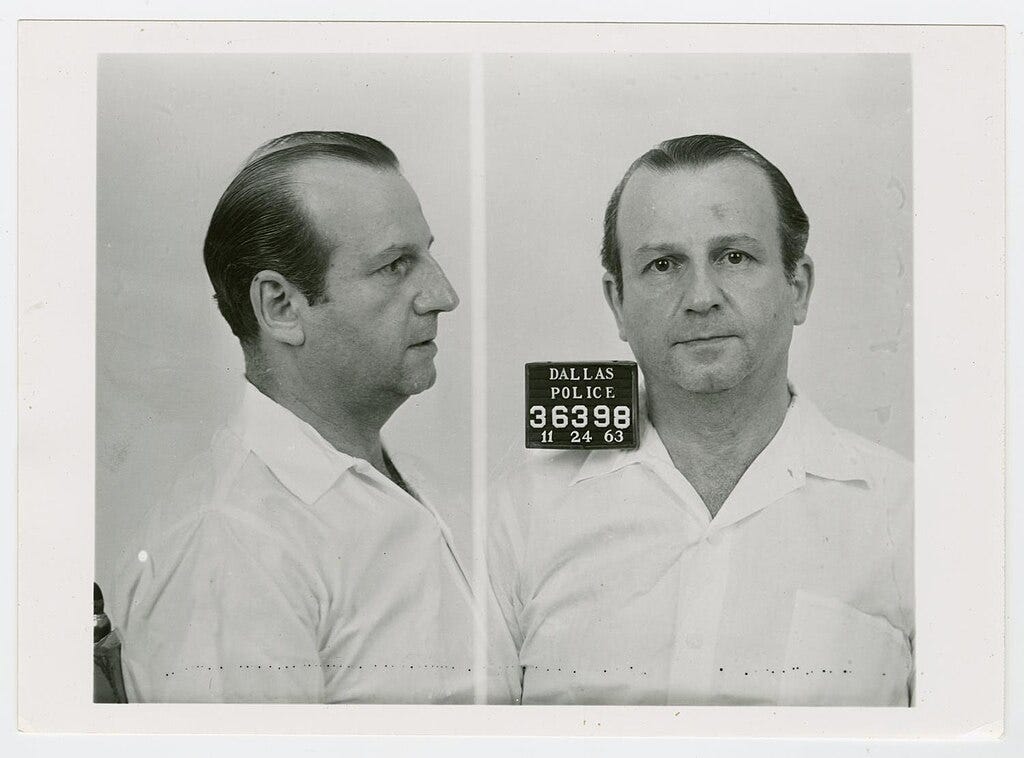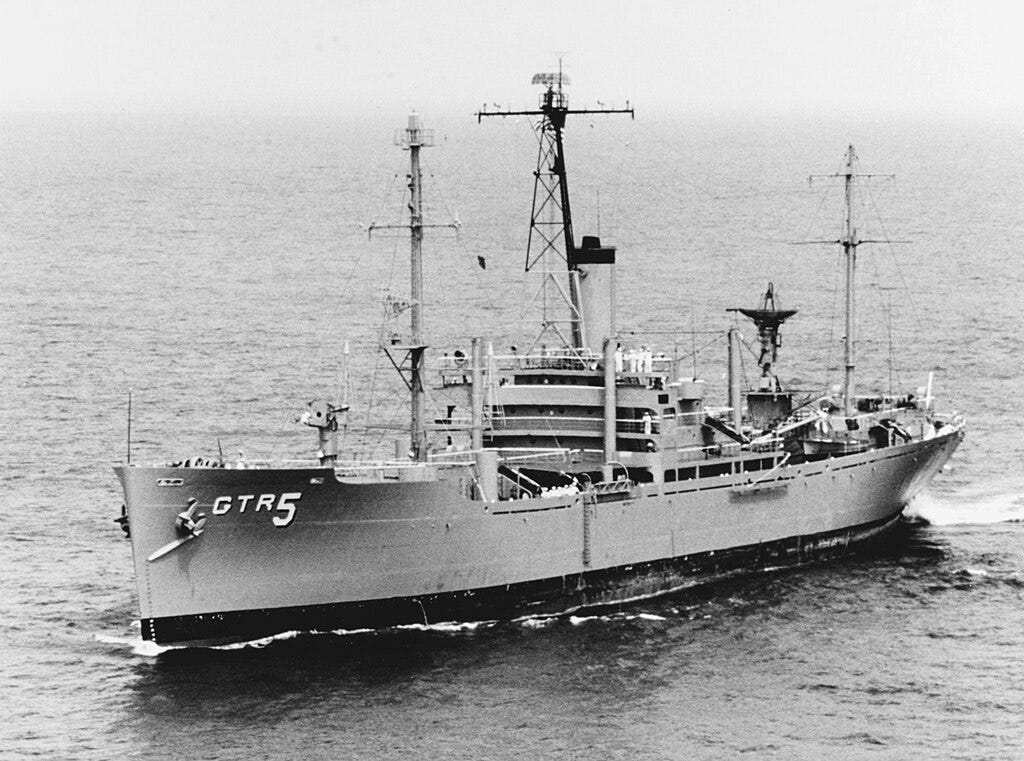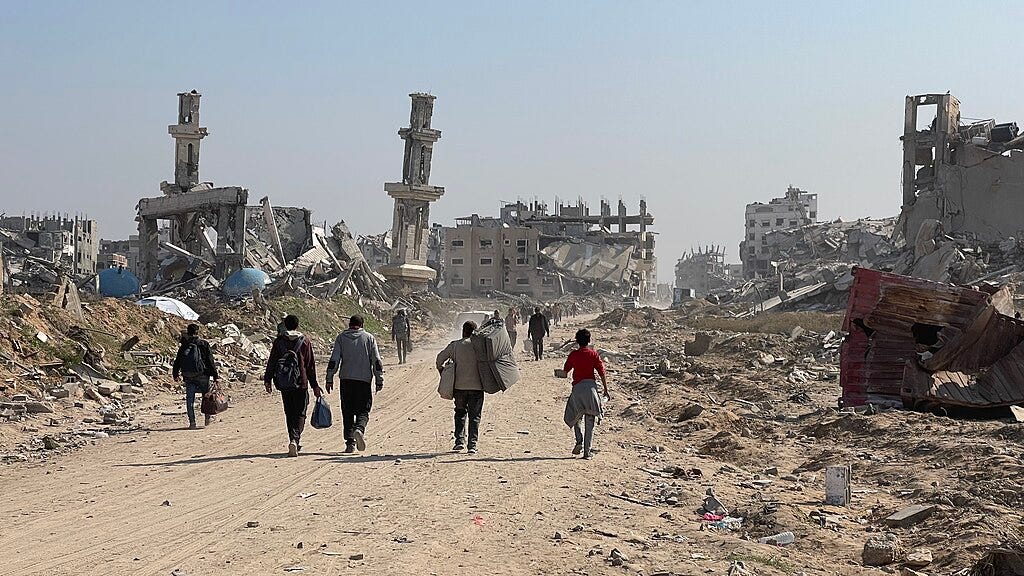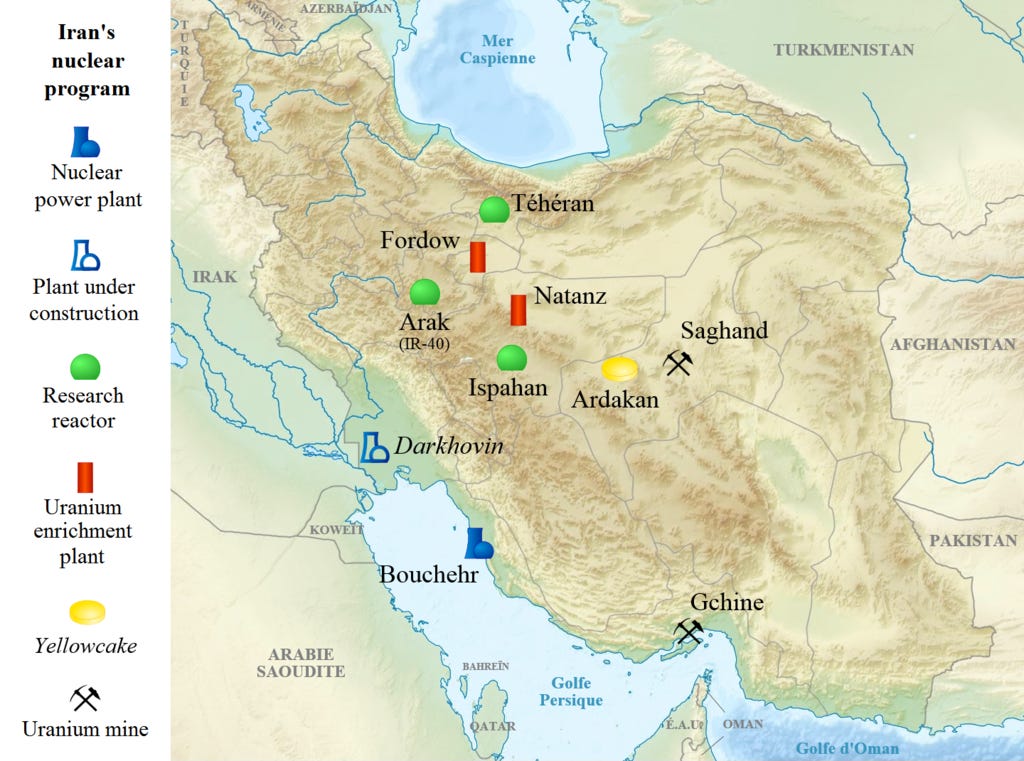The Moment of Truth
As dawn broke over the Middle East on June 21st, 2025, the world woke up to a new reality. The United States bombed three Iranian nuclear sites—Fordow, Natanz, and Isfahan—using six B-2 Spirit bombers launching from Missouri and Navy submarines firing Tomahawk cruise missiles from the Persian Gulf. President Trump’s ultimatum was delivered with characteristic bluntness: Iran must “make peace” within days or face an escalating campaign of destruction.
The strikes were surgical but devastating. At Fordow, buried 300 feet underground in a mountain near Qom, massive bunker-buster bombs penetrated deep into the earth before detonating. The Natanz facility, Iran’s primary uranium enrichment center, was hit by thirty cruise missiles in coordinated waves. Isfahan’s uranium conversion facility—where yellowcake uranium is processed into gas for enrichment—was struck by precision-guided munitions that left much of the complex in ruins.
But to understand how we’ve reached this point, we shouldn’t begin with Saturday’s provocation, but with a story that began over a century ago—a story of deliberate systematic deception that has come at the cost of tremendous amounts of American blood and wealth, executed with patience that spans generations.
The Grand Design Unfolds
The prevailing narrative on Iran goes something like this: they are a radical religious regime run by fanatics who want to destroy Israel and America because they’re antisemitic and hate us for our freedom. They support terrorism, threaten shipping lanes, and pursue nuclear weapons to commit as much destruction as humanly possible. So, it’s in our interest to stop them from getting the bomb before they are able to threaten the United States.
But this evaluation hardly gives us the full picture, just as it did with Saddam Hussein’s alleged weapons of mass destruction, Bashar al-Assad’s supposed threat to regional stability, and Muammar Gaddafi’s imagined plans for African monetary independence. Each time, Americans were told that urgent military action was needed to prevent catastrophe. Each time, the deeper historical precedent was ignored.
The real story begins not in 1979 with Iran’s Islamic Revolution, and not even in 1948 with Israel’s independence, but in 1918, when the Ottoman Empire collapsed and European powers carved up the Middle East after the First World War. The Sykes-Picot Agreement had already secretly divided the region between British and French spheres of influence. When the dust settled, the French controlled Lebanon and Syria, while the British took Palestine and Jordan under the League of Nations mandate system.
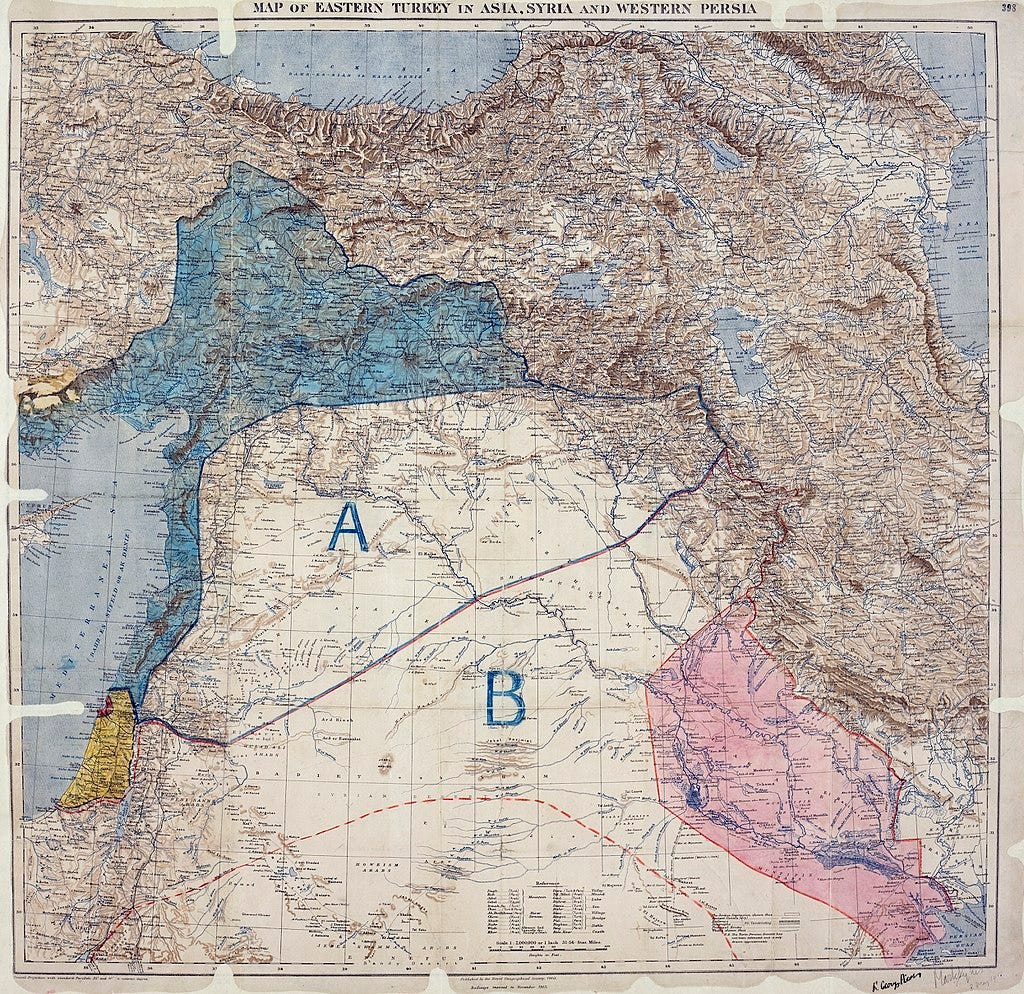
This wasn’t so much a colonial expansion project, but a bid for strategic control over the crossroads between Europe, Asia, and Africa. Whoever controlled this region would control global trade routes that had been vital since ancient times. The Suez Canal, completed in 1869, had made this area even more crucial by providing the shortest maritime route between Europe and Asia.
The Zionist Project Takes Shape
What happened next was unprecedented in modern history. Beginning in the 1920s, a coordinated international effort began moving Europe’s Jews into Palestine. Sold as a spontaneous migration driven by economic opportunity, in reality it was an organized political project with a specific goal: creating a Jewish state in the heart of the Middle East.
The methods used to encourage this migration reveal the calculation behind the project. Zionist organizations weren’t just offering opportunities in Palestine but were actively working to make life increasingly difficult for Jews in Europe. When persuasion failed, intimidation followed. The message was consistent: the only place Jews would truly be safe was in a Jewish state in Palestine.
By the 1940s, hundreds of thousands of Jewish settlers had arrived in Palestine. The indigenous Palestinian population, which had lived there for centuries, suddenly found themselves outnumbered in many areas. Tensions escalated throughout the decade, culminating in systematic campaigns to drive Palestinians from their land through massacres, intimidation, and forced displacement.
The Deir Yassin massacre of April 1948, where Jewish terrorists killed over 100 Palestinian civilians, was only one out of dozens of such incidents which occurred during the Nakba. These terror tactics were part of a coordinated strategy to create panic and trigger mass Palestinian exodus. The strategy worked. By the end of 1948, over 700,000 Palestinians had fled or been forced from their homes, creating the refugee crisis that persists to this day.
The Nuclear Obsession Begins
Every surrounding Arab country responded to Palestinian displacement predictably: they went to war. Egypt and Syria led the charge, supported by Lebanon, Jordan, and Iraq. Not one of its neighbors recognized the new Israeli state, seeing it as an illegitimate colonial implant in the heart of the Arab world.
The 1948 Arab-Israeli War ended in stalemate, but something crucial happened in its aftermath that would shape the next eight decades. A network of American Jewish businessmen and organized mobsters began systematically trafficking weapons to Israel, violating U.S. neutrality laws in the process and triggering an arms race that would engulf the entire region.
Meyer Lansky, the notorious Jewish-American mobster, coordinated much of this effort. Working with reputable businessmen like Joseph Furst and Abraham Feinberg, they established smuggling networks that moved everything from rifles to aircraft to the new Israeli military. When the FBI investigated, they found a sophisticated operation involving dummy corporations, false export licenses, and bribery of U.S. officials.
This weapons pipeline gave Israel a crucial advantage, but it also established a dangerous precedent: outside powers would shape Middle Eastern conflicts through weapons trafficking, making regional balance increasingly unstable.
By 1956, the pattern was clear. Egyptian President Gamal Abdel Nasser had nationalized the Suez Canal, asserting Arab control over this vital waterway. Israel, working secretly with Britain and France, fabricated a pretext to seize it back. The plan was perfect: Israel would attack Egypt, providing Britain and France with an excuse to intervene as “peacekeepers” who would then occupy the canal zone.
The operation initially succeeded, but President Eisenhower was furious at being deceived by his allies. He threatened economic warfare against Britain and France until they withdrew, forcing Israel to retreat as well. For Israeli Prime Minister David Ben-Gurion, this humiliation crystallized a terrifying realization: Israel could not depend on external protection forever. Only one thing could guarantee survival against numerically superior enemies: nuclear weapons.
The Kennedy Confrontation
Ben-Gurion’s nuclear obsession began immediately after Suez. Working with French scientists and engineers, Israel began constructing a nuclear reactor at Dimona in the Negev Desert. The facility was disguised as a textile plant, but U.S. intelligence quickly identified its true purpose.
President Eisenhower made it a point to warn his successor that Israel was pursuing nuclear weapons. From 1961 to 1963, John F. Kennedy demanded regular inspections of Dimona. Ben-Gurion gave him the runaround, employing tactics that would have impressed a spy novelist. Israel constructed fake walls to hide the real size of the reactor, built dummy control rooms to mislead inspectors, and created entirely false facilities to suggest the program was purely civilian.
The deception was sophisticated, but Kennedy wasn’t fooled. U.S. intelligence estimates suggested that Israel was moving rapidly toward weaponization. In a series of increasingly tense exchanges, Kennedy demanded twice-yearly inspections with no advance notice. Ben-Gurion stalled, claimed technical difficulties, and appealed to Jewish-American leaders to pressure the White House.
In mid-1963, Kennedy put his foot down. In a letter that read more like an ultimatum than diplomatic correspondence, he threatened to fundamentally reevaluate the U.S.-Israel relationship if inspections didn’t begin immediately. The alternative, Kennedy made clear, was complete diplomatic isolation and an end to U.S. support.
Ben-Gurion’s response was dramatic and mysterious: he resigned as Prime Minister without explanation, claiming personal reasons that left no one convinced. Political observers were baffled. Ben-Gurion was at the height of his power, facing no domestic crisis that would require resignation.
Three months later, Kennedy was assassinated while riding in a presidential motorcade in Dallas. The man who would later slay Kennedy’s assassin, Jack Ruby, was born one Jacob Leon Rubenstein in Chicago to Polish-Jewish immigrants. When asked why he shot Oswald, Ruby reportedly said he did it “for his people,” though he later claimed he wanted to spare Jackie Kennedy the trauma of a trial. How thoughtful of him.
According to classified U.S. intelligence assessments that wouldn’t be declassified until decades later, Israel’s earliest possible date for nuclear weapons capability was January 1964—setting up the timeline a mere two months after Kennedy’s death. But let us save the JFK conspiracies for another day.
The Johnson Transformation
When Lyndon Johnson became president, U.S. Middle East policy transformed overnight. Johnson, who had cultivated close relationships with rich Jewish political donors throughout his career, tripled military aid to Israel. More importantly, he changed the nature of that aid from economic assistance to military technology.
The timing wasn’t coincidental. Johnson’s closest advisers included several figures with strong pro-Israel sympathies, including Supreme Court Justice Abe Fortas, who continued to advise Johnson informally throughout his presidency. The change in policy was so dramatic that State Department officials complained they were being bypassed entirely on Middle East decisions.
The Pattern Emerges
What happened next established a doctrine that would drive foreign policy for decades. In June 1967, Israel launched a surprise attack that became known as the Six-Day War. In six days of fighting, Israeli forces captured the West Bank, Gaza Strip, Sinai Peninsula, and Golan Heights, tripling Israeli controlled territory.
The official Israeli narrative claimed they were responding to Egyptian aggression, but declassified documents tell a different story. Egyptian President Nasser had moved troops into Sinai as a show of force, but CIA assessments concluded he had no intention of attacking Israel. Israeli leaders later admitted they knew Egypt wasn’t planning an attack—they launched their own offensive to eliminate the Egyptian military while it was unprepared.
During the war, a mysterious incident occurred that has never been fully explained. The USS Liberty, a U.S. Navy intelligence ship monitoring the conflict from international waters, was attacked by Israeli aircraft and torpedo boats. The assault lasted over two hours, killing 34 American sailors and wounding 171 others.
Israel claimed they mistook the Liberty for an Egyptian vessel, but the evidence contradicts this explanation. The Liberty was flying U.S. flags, had clear identifying markings, and was in constant radio contact with Israeli forces who were informed of its presence. Many Liberty survivors insist the attack was deliberate, designed to prevent U.S. intelligence from documenting Israeli military activities.
The Johnson administration accepted Israel’s apology and classified most details of the incident, but the attack sent a clear message: Israel would tolerate no external monitoring of its military operations, even from its primary benefactor.
The Nuclear Threshold
The 1973 Yom Kippur War proved how effective Israel’s emerging nuclear capability had become as a diplomatic weapon. When Egypt and Syria launched a coordinated surprise attack on Judaism’s holiest day, Israeli forces were initially overwhelmed. For the first time since 1948, Israel faced the possibility of military defeat.
Prime Minister Golda Meir’s response was to make cryptic threats about “extraordinary measures” Israel might take if its survival were threatened. U.S. intelligence agencies understood this as nuclear blackmail—Israel was threatening to use atomic weapons rather than accept defeat.
The threat worked. President Nixon, despite concerns about Soviet retaliation, authorized Operation Nickel Grass, a massive airlift that delivered over 22,000 tons of weapons and supplies to Israel. American F-4 Phantom jets were flown directly from U.S. Air Force bases to Israeli airfields, still carrying their USAF markings.
The airlift turned the tide of war. Israel not only survived but launched successful counteroffensives that left Israeli forces closer to Cairo and Damascus than ever before. But the real victory was strategic: nuclear weapons had proven their value not for fighting, but for ensuring superpower intervention when survival was at stake.
The Neoconservative Birth
Something crucial happened in American politics during this period that would shape U.S. foreign policy for decades. Similar to political dynamics after Oct. 7th, many left-wing Jewish Americans who had been Trotskyites and democratic socialists suddenly shifted rightward, becoming vehemently anti-Soviet because Moscow had armed and supported the Arab states in 1973.
This movement, which would later become known as neoconservativism, brought a revolutionary fervor to American conservatism. Unlike traditional conservatives who preferred diplomatic solutions and military restraint, neoconservatives embraced preemptive warfare, regime change, and permanent military superiority as tools of statecraft.
Key American Jewish figures like Irving Kristol, Norman Podhoretz, and Richard Perle didn’t just change their own political positions—they created an intellectual framework that would later justify the Iraq War, the bombing of Libya, and countless interventions across the Middle East. Their argument was simple: America’s enemies were too dangerous to contain, negotiate with, or deter. They had to be destroyed.
The Systematic Destruction
By 1976, the right-wing Likud party came to power in Israel with a clear strategy outlined in a document that would later come to be known as the Oded Yinon Plan. The plan envisioned breaking up large Arab states into smaller, ethnically and religiously fragmented entities that would be too weak to threaten Israel.
The execution was methodical and patient, spanning decades:
Phase 1: Nuclear Monopoly (1981-2003) In June 1981, Israeli F-16 fighters bombed Iraq’s Osirak nuclear reactor, destroying Saddam Hussein’s nuclear program in a surprise attack. The timing was perfect—the reactor was complete but not yet loaded with nuclear fuel which helped to minimize radioactive fallout.
The attack established a crucial precedent: Israel would not tolerate nuclear programs in any other Middle Eastern country. The message was clear to every regional leader: pursue nuclear technology and face preemptive destruction.
In 1982, Israel invaded Lebanon, occupying the southern portion of the country for eighteen years. The invasion triggered a new development that would prove crucial to future events: Iran began training Shia militias in the suburbs of Beirut to resist Israeli occupation. The Islamic Revolutionary Guard Corps established training camps in the Bekaa Valley, creating the foundation for what would become Hezbollah.
Throughout the 1980s, Iran and Iraq faced off in a devastating war that claimed over a million lives. Both sides used chemical weapons, human wave attacks, and deliberately targeted civilian populations. The war was encouraged by various external powers who preferred to see these potential regional hegemons bleeding each other dry rather than threatening neighbors.
When Iraq invaded Kuwait in 1990, the U.S. response was swift and overwhelming. Operation Desert Storm destroyed Iraq’s military infrastructure, eliminated its chemical weapons capability, and dismantled its nuclear program. But crucially, the Bush administration chose to leave Saddam Hussein in power—a wounded, contained dictator was more useful than the chaos that might follow his removal.
Phase 2: Regional Fragmentation (1994-2011) In 1994, Jordan became the second Arab state to normalize relations with Israel, following Egypt’s lead from the Camp David Accords. Jordan’s King Hussein, facing economic crisis and internal unrest, accepted a deal that made Jordan the third-largest recipient of U.S. foreign aid after Israel and Egypt.
The pattern was becoming clear: Arab states could choose cooperation and American bribery, or face isolation and potential destruction. Most chose cooperation.
In 1996, a group of American neoconservatives produced a policy document called “A Clean Break: A New Strategy for Securing the Realm.” Written for incoming Israeli Prime Minister Benjamin Netanyahu, the document recommended abandoning the peace process with Palestinians and instead focusing on regime change in Iraq, Syria, and Iran.
The Clean Break document reads like a blueprint for the next two decades of Middle Eastern warfare. It recommended weakening Syria by attacking its allies and removing Saddam Hussein to destabilize Iran’s strategic position. Most remarkably, it suggested that Israel could reshape the entire regional order through a series of limited conflicts.
Phase 3: The Post-9/11 Acceleration (2001-2011) The September 11 attacks provided the perfect pretext for implementing the Clean Break strategy. Within hours of the Twin Towers falling, neoconservative voices were calling for attacks not just on Afghanistan, but on Iraq, Iran, and Syria.
The fabricated intelligence about Iraqi weapons of mass destruction wasn’t a mistake—it was a deliberate deception designed to justify a war that neoconservatives had wanted for years. The aluminum tubes supposedly used for uranium enrichment, the mobile biological weapons labs, the yellowcake uranium from Niger—all were known to be false or highly questionable when presented to the American public.
The 2003 invasion of Iraq succeeded beyond the neoconservatives’ wildest dreams. Not only was Saddam Hussein removed, but the country was broken into feuding sectarian militias that posed no threat to anyone beyond Iraq’s borders. Iraq’s military was disbanded, its government institutions destroyed, and its society fractured along ethnic and religious lines.
Libya’s Muammar Gaddafi, watching Saddam’s fate, voluntarily abandoned his nuclear program and accepted international inspections. The message was received: nuclear programs brought destruction, while submission brought survival. Or so he thought.
In 2007, Israel bombed Syria’s Al-Kibar nuclear reactor, destroying another potential regional nuclear capability. Syria’s lack of response demonstrated how isolated and weakened Arab states had become.
The Arab Spring Opportunity
The 2011 Arab Spring uprisings provided the perfect cover for the final phase of regional transformation. What began as genuine popular protests against authoritarian governments quickly became a series of proxy wars that only served Israeli strategic interests.
In Libya, NATO intervention transformed a civil conflict into complete state collapse. Gaddafi, who had abandoned his nuclear program and cooperated with Western counterterrorism efforts, was brutally murdered by rebels armed and supported by NATO forces. The message was unmistakable: cooperation with the West provided no protection against regime change when geopolitical winds shifted.
Syria’s civil war was even more devastating. What began as protests against Bashar al-Assad’s government became a proxy war involving dozens of countries and international actors. The conflict killed over 500,000 people, displaced millions more, and effectively destroyed Syria as a functioning state.
With Iraq broken, Libya collapsed, and Syria devastated, ISIS emerged from the chaos to spread across the region. The terrorist group’s brutality provided justification for continued American military presence throughout the Middle East, preventing any regional power from filling the vacuum left by collapsed governments.
Iran found itself increasingly isolated, surrounded by failed states, American military bases, and hostile neighbors. The Islamic Republic’s support for proxy militias in Iraq, Syria, Lebanon, and Yemen was perceived as aggression but from their point of view it was a defensive response to strategic encirclement.
October 7th: The Final Pretext
Which brings us to October 7th, 2023—the day that provided the pretext for the final phase of complete regional transformation. Hamas launched its attack from Gaza in an operation that Israeli intelligence had monitored for months but allowed to proceed.
Multiple Israeli intelligence sources have since confirmed that warnings about the attack were ignored or suppressed by senior officials. The sophisticated border monitoring system that could detect a butterfly crossing from Gaza somehow failed to notice 1,000 armed militants preparing for a major assault.
The attack provided exactly what Israeli leaders needed: a Pearl Harbor moment that would justify unlimited military action against all remaining regional adversaries. The brutal war in Gaza that followed has killed over 55,000 Palestinians, destroyed most of the territory’s infrastructure, and displaced almost the entire population.
But Gaza was never the real target—it was the pretext for a much larger campaign. Hezbollah’s limited support for Gaza triggered Israeli attacks on Lebanon. The Houthis’ attacks on Red Sea shipping justified American bombing of Yemen. Iraqi militias’ harassment of U.S. bases provided reasons for continued American occupation.
Each response was carefully calibrated to escalate the conflict without triggering full-scale war. The goal wasn’t to destroy these proxy forces immediately, but to create justification for their systematic eradication over time.
The October 2024 pager attacks that killed dozens of Hezbollah operatives across Lebanon demonstrated Israeli intelligence capabilities that shocked the world. If Israel could coordinate simultaneous explosions of thousands of communication devices, what else might they be capable of?
The subsequent Israeli invasion of southern Lebanon, while limited in scope, effectively decimated Hezbollah’s rocket stockpile and command structure. By December 2024, the organization that had been Iran’s most effective proxy was reduced to a shadow of its former strength.
The Syrian Collapse
December 2024 brought the most dramatic development yet: the collapse of Bashar al-Assad’s government in Syria. A Turkish-Israeli-American backed coalition of rebel groups launched a lightning offensive that captured Damascus in less than two weeks.
But it wasn't the result of popular uprising or military defeat that eventually toppled Assad. It was a planned, orchestrated regime change that removed Iran’s most important regional ally. The new Syrian government immediately began discussing normalization with Israel, while Israeli forces destroyed Syria’s remaining military infrastructure to prevent any future threat.
With Syria neutralized and Hezbollah crippled, Iran found itself more isolated than ever. The “axis of resistance” that had provided strategic depth for decades was crumbling. Only the proxy militias in Iraq and the Houthis in Yemen remained as meaningful allies, and both were under constant attack.
The 60-Day Ultimatum
Trump’s return to the presidency in January 2025 accelerated the timeline dramatically. On April 12, 2025, he sent a letter to Iran’s Supreme Leader Ali Khamenei setting a two-month deadline for a comprehensive nuclear agreement.
The terms were deliberately impossible to accept: complete dismantlement of Iran’s nuclear program, including uranium stockpiles; international monitoring of all nuclear facilities; compensation for American companies damaged by sanctions; and acceptance of permanent limits on ballistic missile development.
Iran’s rejection was predictable and probably desired. By June 2025, the Islamic Republic had accumulated over 9,000 kilograms of enriched uranium, with some stockpiles enriched to 60% U-235—just one step away from weapons-grade material. Their breakout time to a nuclear weapon had shrunk to weeks rather than months.
The diplomacy was theater designed to provide legal and moral justification for what came next. When Trump announced he would wait “up to two weeks” to decide on military action, the decision had already been made.
The Final Strikes
Saturday’s attacks were the culmination of months of escalating pressure. Israel had been conducting increasingly bold strikes on Iranian nuclear facilities since March, testing Iran’s defenses and mapping target locations for American planners.
The Natanz facility had suffered repeated cyber attacks and sabotage operations. Parts of the Isfahan conversion plant had been damaged by mysterious explosions. Even the heavily fortified Fordow site, buried deep in a mountain, had been penetrated by Israeli intelligence operations.
But these pinprick attacks were preparation for Saturday’s overwhelming assault. Six B-2 Spirit bombers, flying non-stop from Whiteman Air Force Base in Missouri, dropped massive bunker-buster bombs designed to penetrate the deepest underground facilities. Navy submarines fired thirty Tomahawk cruise missiles in carefully timed waves that overwhelmed Iranian air defenses.
The message was unmistakable: Iran’s nuclear program would not be tolerated by the United States, and its government would fall unless it surrendered completely.
The Endgame Revealed
Here’s my prediction for what comes next, and why this outcome seems nothing short of inevitable:
Phase 1: Regime Change in Iran (2025-2026) The bombing campaign will escalate systematically until Iran’s government falls. The pattern is already established: economic warfare through sanctions, military pressure through bombing, and internal destabilization through support for opposition groups.
Iran’s economy, already devastated by decades of sanctions, cannot withstand the additional pressure of infrastructure destruction. The Islamic Republic’s legitimacy depends on its ability to resist external pressure—once that resistance proves futile, popular support will evaporate.
A pro-Western regime will be installed in Tehran, exactly as happened in Iraq, Libya, and Syria. The new government will immediately abandon Iran’s nuclear program, dismantle its proxy networks, and normalize relations with Israel.
Phase 2: Regional Consolidation (2026-2027) With Iran neutered, the remaining pieces of resistance will collapse like dominoes. Hezbollah, already weakened by Israeli attacks, will lose its primary patron and weapons supplier. Iraqi Shia militias will be abandoned by their sponsors and eliminated by American forces.
The Houthis in Yemen, isolated and outgunned, will either accept a negotiated surrender or face complete destruction. Syria’s new government will formalize peace with Israel and begin cooperation on security matters.
Phase 3: The Prize (~ 2030) Israel will achieve something unprecedented in modern history: complete control over the Middle East crossroads. Every major power center from the Atlantic Ocean to the Persian Gulf will be either allied with Israel, occupied by American forces, or reduced to failed state status.
The economic implications are staggering. All trade between Africa, Asia, and Europe—whether by sea through the Suez Canal and Red Sea, or by land through the historic Silk Road routes—will flow through Israeli-controlled territory. The customs duties, transit fees, and logistical control over this trade will generate enormous wealth.
But the strategic implications are even more important. Israel will control the energy flows that power European and Asian economies. Natural gas pipelines from the Gulf to Europe, oil tanker routes through the Persian Gulf, and renewable energy transmission lines connecting African solar farms to European grids—all will require Israeli permission to operate.
Why America Was Used
This is where the story becomes tragic for ordinary Americans. The United States recognizes that the 21st century’s decisive showdown will be in the South Pacific, confronting China’s rise as a global superpower. Secondary conflicts in Central and South America also require attention as Chinese influence grows in America’s traditional sphere.
To pivot away from the Middle East while maintaining control over this strategically vital region, Washington needs reliable proxies who can manage regional security without constant American supervision. Israel and Saudi Arabia were chosen as these proxies, with Israel responsible for the eastern Mediterranean and Saudi Arabia managing the Persian Gulf.
But if Israel can eliminate Iran—the last major independent power in the region—they won’t need Saudi cooperation as much. Israel alone will be capable of managing Middle Eastern affairs, freeing America to focus entirely on the Pacific.
The tragedy is what this means for American interests. In less than 80 years, a stateless people have used American blood, treasure, and diplomatic capital to achieve total regional domination. The trade profits from controlling the crossroads of three continents will make Israel one of the world’s wealthiest nations per capita.
Meanwhile, America will have spent trillions of dollars and thousands of lives creating a rival power that will soon control global trade routes American companies once dominated. Israeli firms will collect the transit fees that American logistics companies might have earned. Israeli banks will finance the trade that American banks might have funded.
The Nuclear Paradox
This brings us to the cruel irony that more traditional media refuses to acknowledge: Iran didn’t pursue nuclear weapons because they want to “kill everybody” or “wipe Israel off the map.” Iran pursued nuclear weapons because they watched Israel and the United States systematically destroy every single one of Israel’s neighbors that might have served to balance the power in the region.
Iran’s current uranium stockpile of over 9,000 kilograms, enriched up to 60% U-235, represents a rational response to an existential threat. Every Iranian leader has watched Iraq’s military destroyed twice, Libya’s government overthrown despite cooperation, Syria’s state collapsed, and now their own country facing systematic destruction.
Iran isn’t pursuing nuclear capabilities out of aggression. They are the only possible deterrent against a demonstrated pattern of regime change that has eliminated every other regional power. Iran’s nuclear program is a desperate attempt to achieve what Pakistan, India, and North Korea have already accomplished: insurance against foreign invasion through nuclear deterrence.
The enrichment facilities at Natanz and Fordow, the heavy water reactor at Arak, the uranium conversion plant at Isfahan—all were designed not to threaten other countries, but to make Iran too dangerous to attack. The strategy almost worked.
The American Awakening
The most devastating realization for Americans should be this: ordinary citizens—hardworking people who pay taxes and send their children to fight America’s wars—were used to birth a rival power that will soon control global trade routes we once dominated.
While we were told we were fighting terrorism, spreading democracy, and protecting human rights, we were actually clearing the board for Israeli regional hegemony. Every American soldier killed in Iraq, every tax dollar spent on Middle Eastern interventions, every diplomatic relationship damaged by our regional policies—all served to eliminate potential competitors to Israeli power.
The neoconservative movement that drove these policies wasn’t advancing American interests. They were advancing Israeli interests that happened to align with American goals in some areas while contradicting them in others. When conflicts arose between American and Israeli priorities, Israeli interests consistently won the day.
Consider the pattern: America spent $2 trillion invading Iraq to eliminate a threat to Israel. We spent billions supporting Syrian rebels to weaken Iran’s ally. We maintained sanctions on Iran that drove up global energy prices. We provided unconditional military aid to Israel while they developed trade relationships with China that undermined American strategic goals.
Each time, Americans were told these policies served our national interests. But the primary beneficiary was always Israel, which grew stronger and more independent while America grew more indebted and internationally isolated.
What Happens Next
As I write this, Iranian Foreign Minister Hossein Amir-Abdollahian says diplomacy can “easily” restart if Trump orders Israel to halt its strikes and lifts some sanctions. Iranian President Ebrahim Raisi has suggested Iran might accept enhanced international monitoring in exchange for sanctions relief.
But these diplomatic overtures are meaningless now. The momentum toward regime change is irreversible. Israel has invested too much in reaching this moment to accept anything less than complete Iranian surrender, and Trump has staked too much political capital on military action to back down.
Within 18 months, I predict Iran’s Islamic Republic will fall. A pro-American, pro-Israeli government will take power in Tehran. The last major independent force in the Middle East will be neutralized, leaving Israel as the undisputed regional hegemon.
The new Iranian government will immediately abandon the nuclear program, dismantle proxy militias, and begin normalizing relations with Israel. Iranian oil and gas will flow to world markets under Western control, while Israeli firms will manage much of the transportation and logistics.
Saudi Arabia, realizing that Israeli dominance is now inevitable, will deepen its cooperation with Tel Aviv. The Abraham Accords will expand to include every significant Middle Eastern country except those too weak or chaotic to matter.
The New Middle East
By 2030, the Middle East will look nothing like the region Americans remember from their history books. Instead of competing nation-states balanced against each other, there will be a single dominant power managing a collection of client states, occupied territories, and failed states.
Israel will be the regional hegemon, controlling trade routes, energy flows, and security arrangements from the Mediterranean to the Persian Gulf. American military bases will remain to deter external intervention, but day-to-day management will be Israeli responsibility. The Palestinians will have been relocated to Jordan or other Arab states, ending the conflict that provided justification for decades of regional instability. Gaza will be rebuilt as an Israeli port city. The West Bank will be formally annexed and developed as suburban communities for Israeli settlers. Lebanon will be a neutral state under informal Israeli protection, similar to Austria during the Cold War. Syria will be partitioned into autonomous regions that pose no threat to neighbors. Iraq will remain under American occupation, providing a buffer against any future Iranian government that might seek regional influence.
The economic transformation will be even more dramatic than the political changes. Tel Aviv will become the financial capital of the Middle East, with Israeli banks managing the region’s oil revenues and trade financing. Israeli technology companies will dominate regional markets, while Israeli logistics firms will control the flow of goods between continents.
The Global Implications
The creation of Israeli regional hegemony will have consequences far beyond the Middle East. By controlling the crossroads between Europe, Asia, and Africa, Israel will influence global trade patterns in ways that benefit Israeli interests rather than American ones.
Chinese goods flowing to European markets will pay transit fees to Israeli companies rather than American ones. African resources moving to Asian manufacturers will be financed by Israeli banks rather than American ones. European energy imports from the Middle East will be managed by Israeli firms rather than American ones.
This shift will accelerate America’s relative decline as a global economic power. The profits that might have flowed to American companies will instead strengthen Israel’s economy. The strategic leverage that America once enjoyed through control of global trade routes will pass to Israel.
Meanwhile, China will benefit enormously from this arrangement. Israeli leaders, focused on regional dominance rather than global competition, will maintain profitable relationships with China even as America seeks to contain Chinese influence. Israeli technology companies will continue sharing innovations with Chinese partners, while Israeli ports will welcome Chinese shipping companies.
The long-term result will be a multipolar world where America faces stronger competitors with fewer allies and less economic leverage. The Middle Eastern empire that Americans paid to create will become increasingly independent of American influence, pursuing its own interests even when they conflict with American goals.
The Question Americans Must Ask
The bombs that fell on Iran Saturday weren’t just about stopping a nuclear program. They were the final moves in a chess game that started when the Ottoman Empire collapsed in 1918 and Zionists began flooding historic Palestine with European Jews. And most Americans still don’t realize what role they played in the game or how it will end.
The question Americans should be asking isn’t whether Iran’s government deserves to be overthrown. The question is: when did we agree to spend a century building a rival empire that will soon control global trade routes our children and grandchildren might have inherited?
The Middle East endgame isn’t about preventing nuclear proliferation or stopping terrorism. It’s about the birth of a new regional empire—one that Americans paid to create, but will never control. As the smoke clears over Iran’s bombed nuclear facilities, one thing is certain: the geopolitical map of the 21st century is about to be redrawn.
And most Americans still don’t realize that just because we’re holding the pen doesn’t necessarily mean we’re the ones writing the script.



